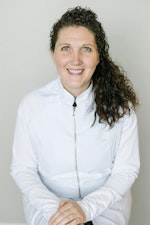The American Cancer Society released the US 2023 estimates for oropharyngeal and oral cavity cancer, included in table 1.1 The overall death rate has increased .4% per year from 2009 to 2020 after decades of decline. This is largely due to an increase in oropharyngeal cancer mortality of almost 2% per year during that 11-year stretch.
These types of cancers are found most often in the oropharynx, tonsils, tongue, gingiva, and floor of the mouth.1 The five-year survival rate is still around 50% in most countries despite new management strategies.2 Prevention is key due to oral cancers' poor outcomes. As dental professionals we are trained on the proper techniques to screen for oral cancer, but too often we feel limited on time to complete this essential step.
More from Hygiene Edge:
Cancers in the oropharynx linked with human papillomavirus infection (HPV) have increased yearly by 1.3% in women and by 2.8% in men from 2015–2019.1 Can we be doing more as dental professionals to advocate for our patients on vaccination for this virus?
Consider sitting down with your team to discuss how your practice will manage oral cancer screenings. Discuss making policies on the following:
Who performs the screenings
Of course the dentist and dental hygienist are both trained in this procedure, but who will do the palpation exam? It could be left up to the dentist to do during their full exam, but most offices find that the hygienist has more time in their appointment, with the dentist following up on the hygienist's findings. I worked in one office where the dentist requested that both of us do the exam. Ultimately you need to decide what’s best for your practice.
When in the appointment series the screenings will be done
Will it be at the beginning or end of the hygiene visit, or during the dental exam? One office I worked in had a policy set to do it opposite of the periodontal soft tissue exam. For example, in January I’d document probe depths, and then in July I’d do the oral cancer screening. Either way, make a set time and stick to it.
How frequently they should be done
Should you screen your patients annually, twice a year, or every time they come in? You decide what interval the patient should be receiving them based on their risk factors.
In addition to the physical palpation examination, include a review of lifestyle habits that may be risk factors for an oral lesion (and make a referral for interprofessional collaboration for these risk factors as needed). These include:
- tobacco/smokeless use
- alcohol use
- precancerous lesions
- field cancerization
- genetics
- gender
- UV light
- increased body mass index
- improper nutrition
- HPV 1, 2
How the results will be recorded
Consider a standard auto note for documentation and be as descriptive as possible: size, shape, color, consistency, texture, time present, reported symptoms, referrals, etc.
A review of technique
Be sure to review the skill by checking out the Hygiene Edge examples of intraoral examinations (above) and also extraoral examinations on our YouTube channel. You will ultimately need to decide what aspects to perform based on the latest research.
Overall oral cancer screenings are not something that we can skip when we feel limited on time. They are the standard of care and essential to each patient's oral health.
References
1. American Cancer Society. Key Statistics for Oral Cavity and Oropharyngeal Cancers. Accessed January 19, 2023. https://www.cancer.org/cancer/oral-cavity-and-oropharyngeal-cancer/about/key-statistics.html
2. Irani S. New insights into oral cancer-risk factors and prevention: a review of literature. Int J Prev Med. 2020;11:202. doi:10.4103/ijpvm.IJPVM_403_18
Hygiene Edge was created by three dental hygiene educators who love both dentistry and education. With over 40 years of experience both in the education space and in the dental field, Melia Lewis, Jessica Atkinson, and Shelley Brown love sharing their knowledge through helpful, short videos online, speaking, and working with amazing companies. You can find more information at Hygiene Edge, on YouTube (youtube.com/hygieneedge), and Instagram (@hygieneedge). Have a question or a tricky area? Let us know! We’d love to help.







